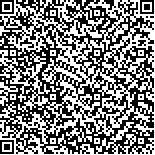下载中心
优秀审稿专家
优秀论文
相关链接
摘要

数字水印技术可为DEM的版权保护提供有效的解决方案.探讨了DEM数字水印技术的要求,提出"近无损"性是DEM区别与普通图像数字水印的主要特征.即含水印DEM除与普通数字图像一样须满足水印的不可见性外,还应当满足DEM精度"近无损"和应用"近无损"要求.通过实验分析了考虑视觉模型的DCT分块数字水印算法、DWT数字水印算法对DEM的适用性问题.结果显示,水印对DEM精度与地学基本应用有一定影响,以图像视觉质量为优劣标准的数字水印算法并不一定能满足DEM的精度和应用要求.
The demand for DEM data has dramatically increased mainly due to the large number of possible applications capable to exploit DEM data. As in many other fields, with the Internet has become preferred and effectivemeans of data exchange, the online purchasing and distribution of DEM can now be performed relative easily. It follows that the copyright protection is increasingly becoming more and more important. Watermarking represents a potentially effective tool for the protection and verification of ownership rights in DEM. But before applying watermarking techniques developed for multimedia applications to DEM, it is important that the requirements imposed by DEM are carefully analyzed to investigate whether they are compatible with existing watermarking techniques. On the basis of these motivations,an overview of watermarking is given, and the contribution of thiswork is twofold:①Assessmentof the requirements mi posed by the characteristics ofDEM onwatermark-based copyrightprotection is comparedwith usual digital mi ages. In themultmi edia field, watermarkmustbe transparent to the human visual system.While in theDEM context, this requirement can be rephrased as“not altering the elevation precision and the results of application to an extentofDEM besides transparency”.This is called near-lossless requirement in this paper. It isworth noticing thatnear-lossless is consideredmore necessary than robustness requirement. That isbecause almostnobodywould\nattack DEMs with degraded quality. Adaptivity is another characteristic of DEM watermark technique.Generally speaking,DEMs required high precision could be embedded in lesswatermark energy. WhileDEMs required low precision are on the contrary. Since differentprecision standards are established for different landforms ofDEM, watermark energy embedded should also change adaptively to landforms. Itensures that thewatermarkedDEMmeets accuracy requirements ofDEM aswellaswatermark energy could be inserted asmuch aspossible. In addition, efficiency ofwatermark algorithms should also be considered.②Discussion of a case study where the performance of two popular, state-of-the-art watermarking techniques is evaluated by the light of the requirements at the previous point. One is based on block-based DCT techniques using Watson perceptualmode,l the other is based on DWT techniques using PWM perceptualmode.l The two algorithms are applied to a 512×512 DEM ofLoess Plateau with a horizontal grid spacing of 5m. The watermark is a 64×64 binary miage. In the expermi ent, watermarkedDEMs are ensured transparentto the human visualsystem. In order to evaluate the mi pact of the watermark presence on DEM, we considered histogram, slope, slope of slope, contours, collection waterlines and terrain structure lines derived from the twowatermarked DEMs. Ithas been shown that the presence of the watermark has almostno mi pacts on histogram. However, the results of the applicative tasks in digital terrain analysis are heavily affected not only in the human vision but also in values.As for the DWT algorithm, from which contours,collectionwaterlines and terrain structure lines derived all exhibitpoorer precision.Obviously, watermarking techniques evaluated byhuman visual system don’talwaysmeet the requirementsofelevation precision and applications ofDEM. Watermark embedding should be very lmi ited on avoidingDEM quality degradation. In\nthe further, workwill ami at the developmentofwatermarking techniques specifically designed forDEM, so as tominmi ize the mi pacton the applications.

